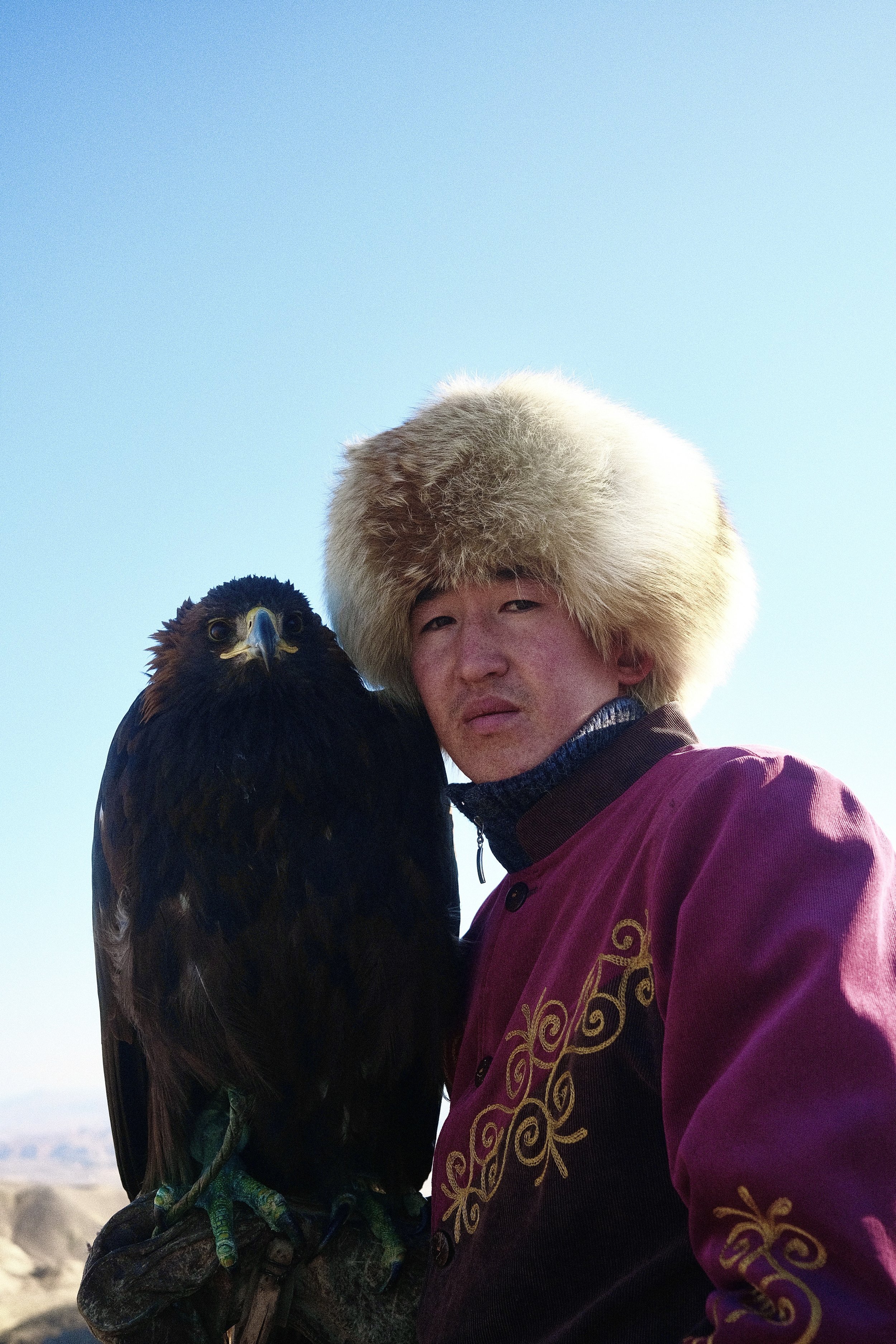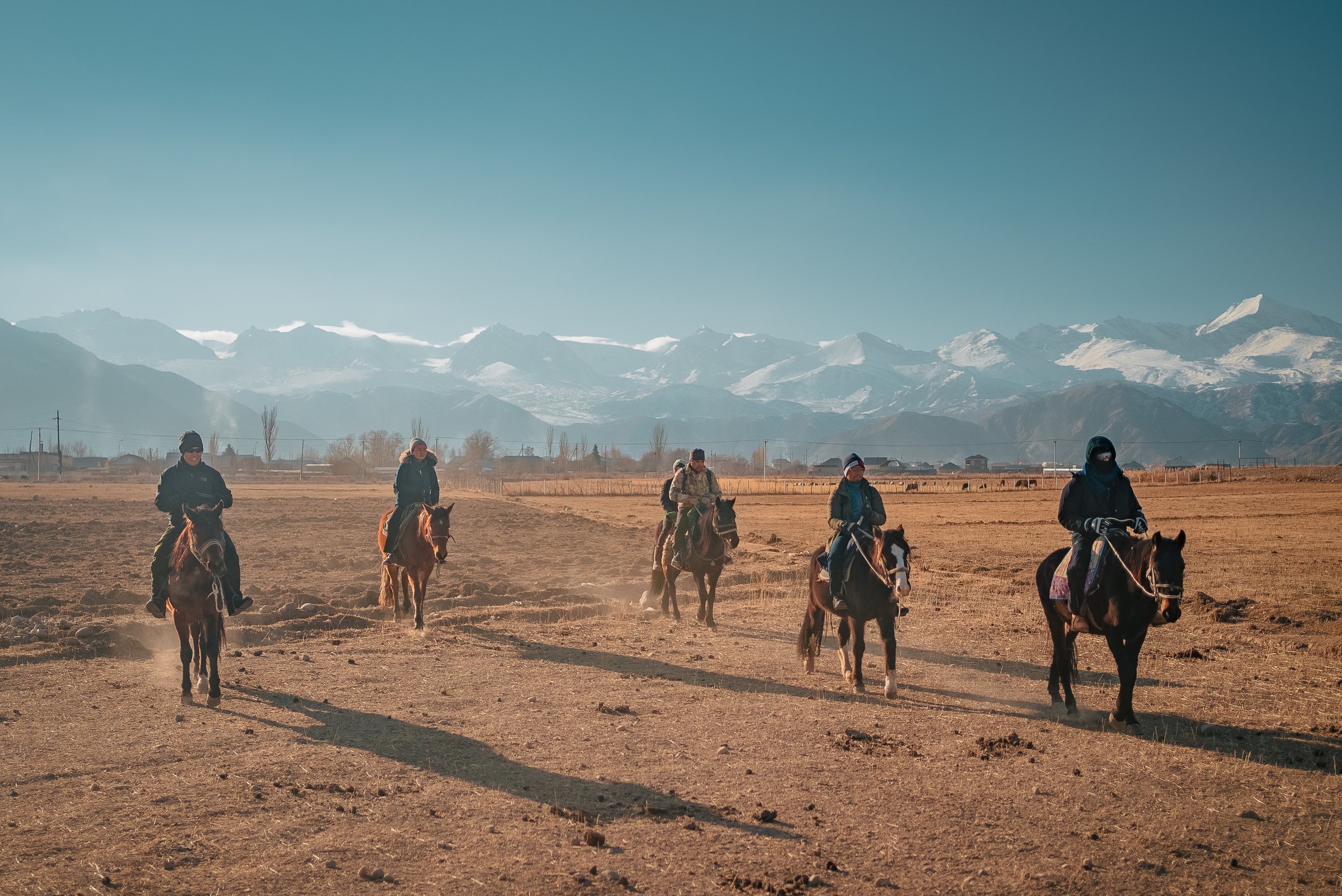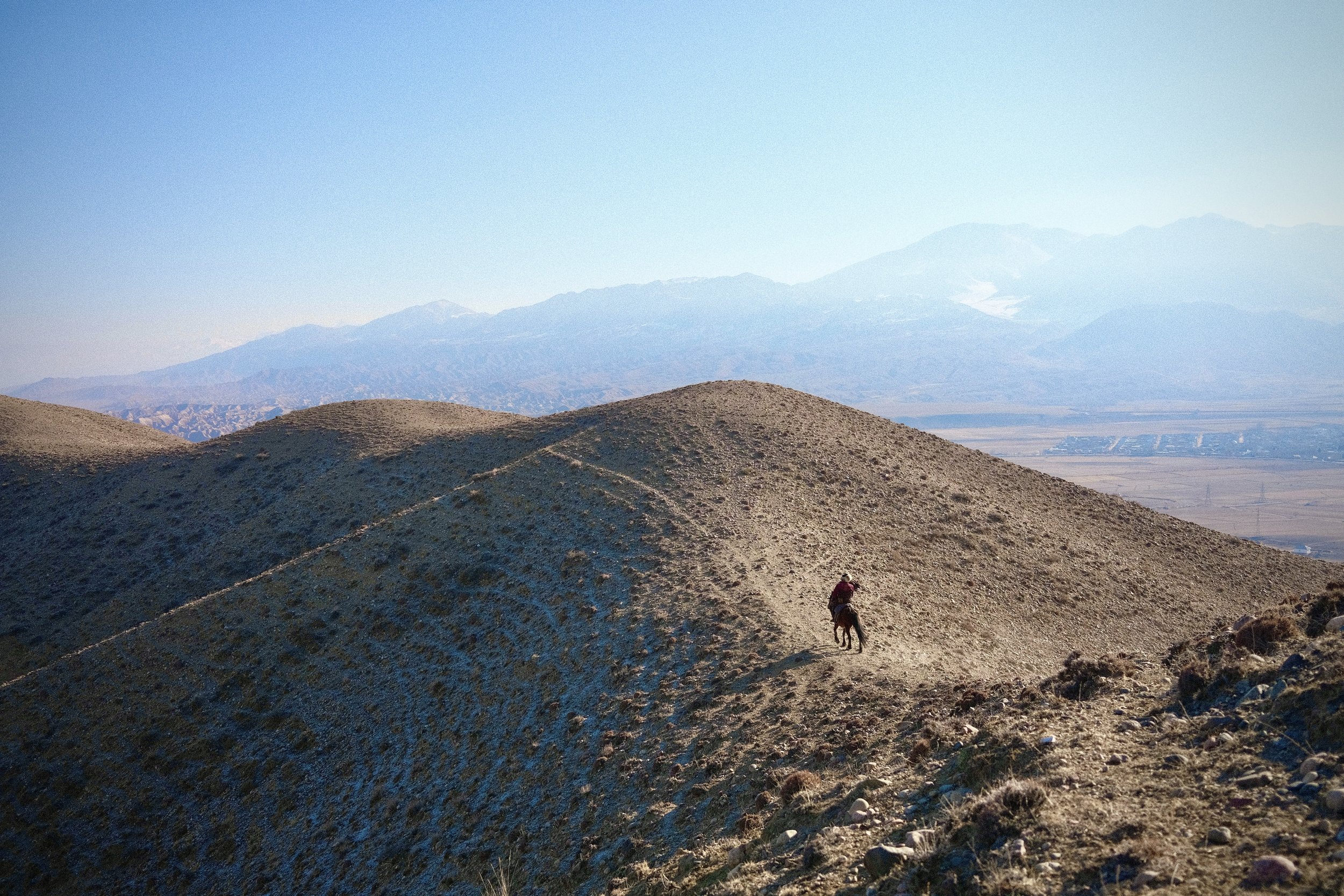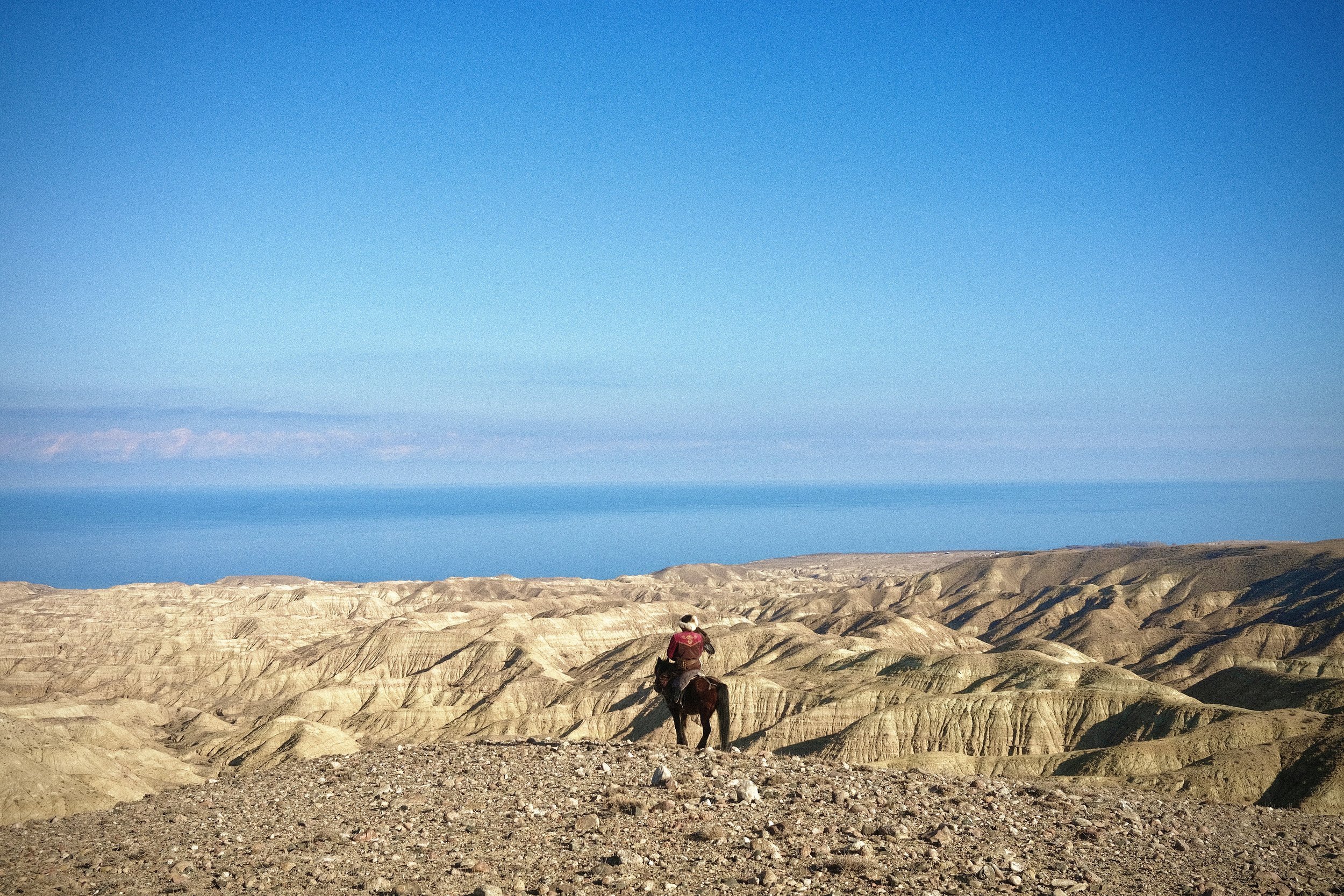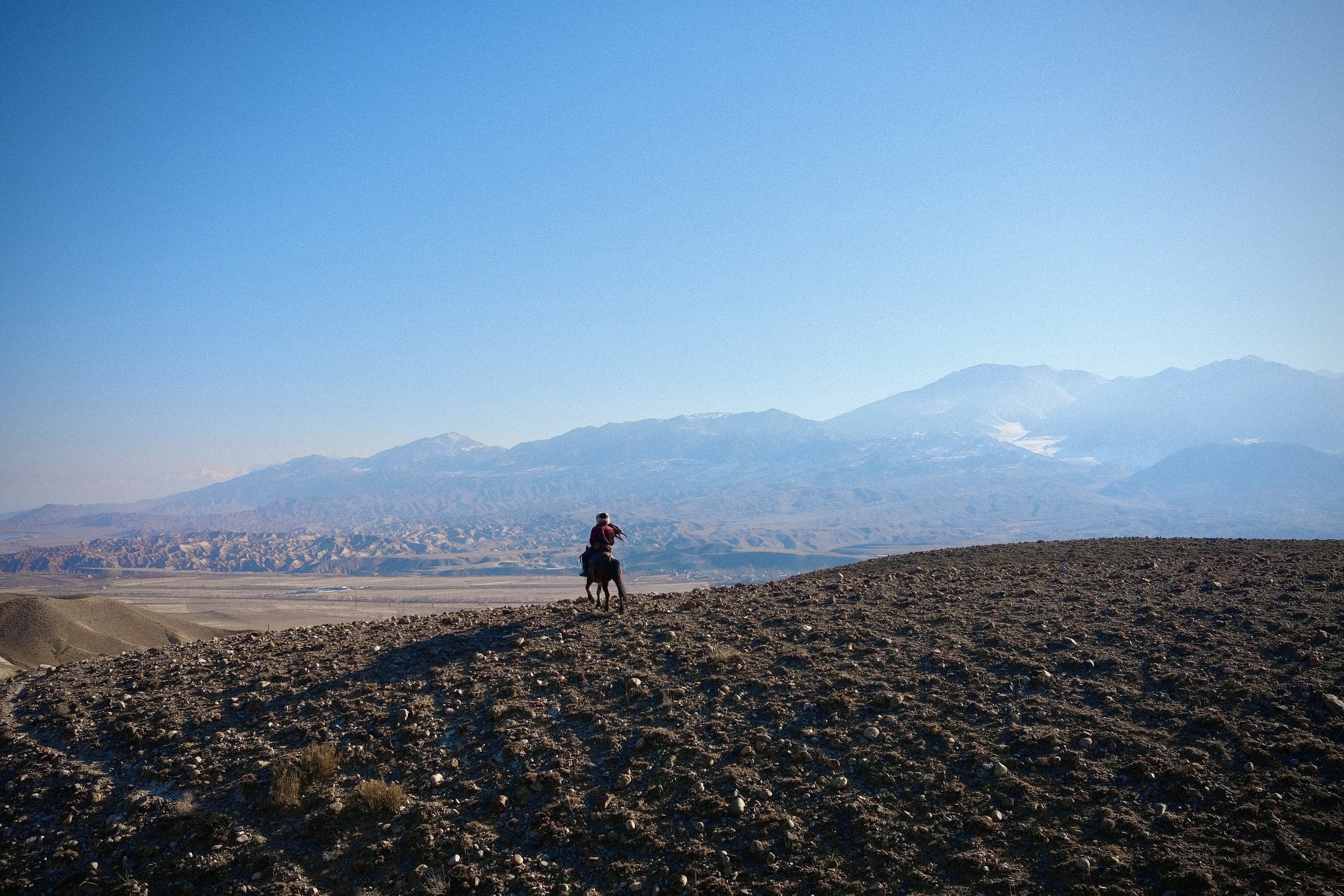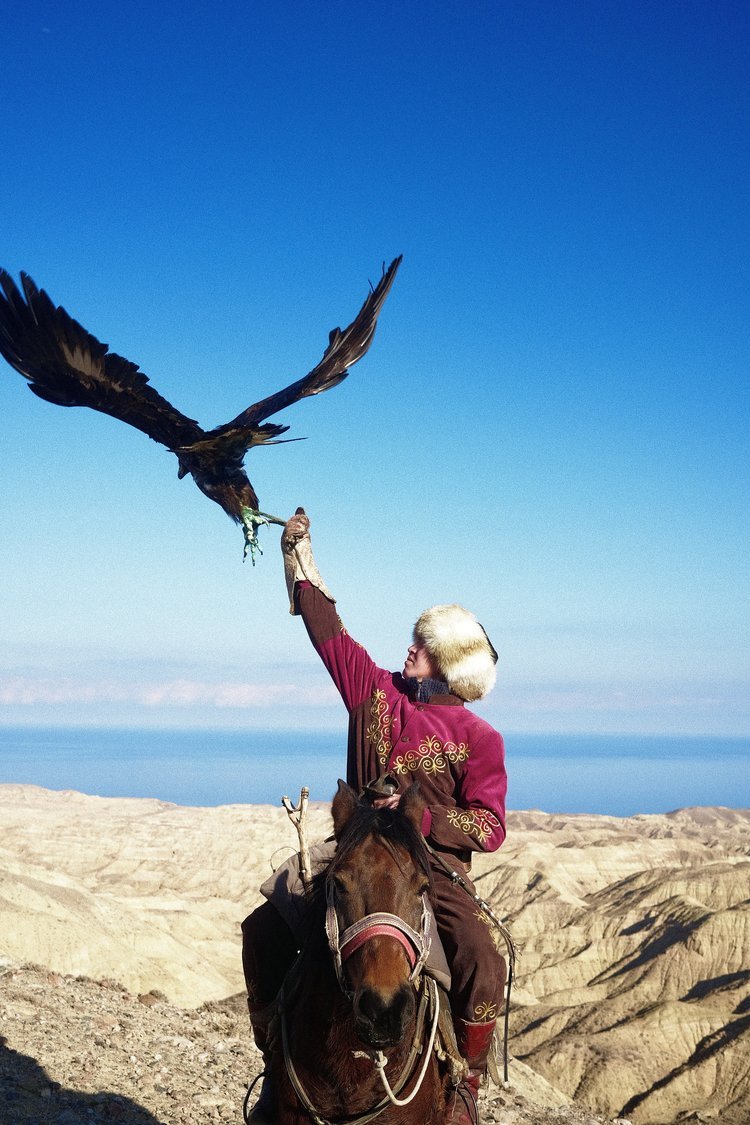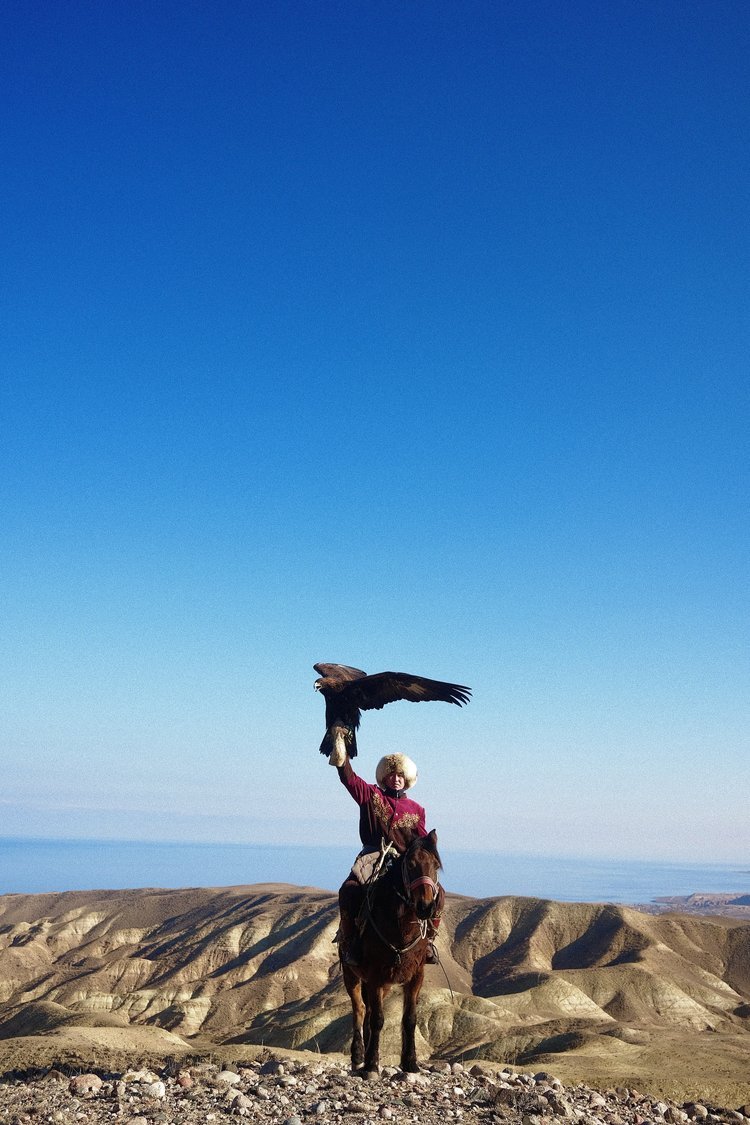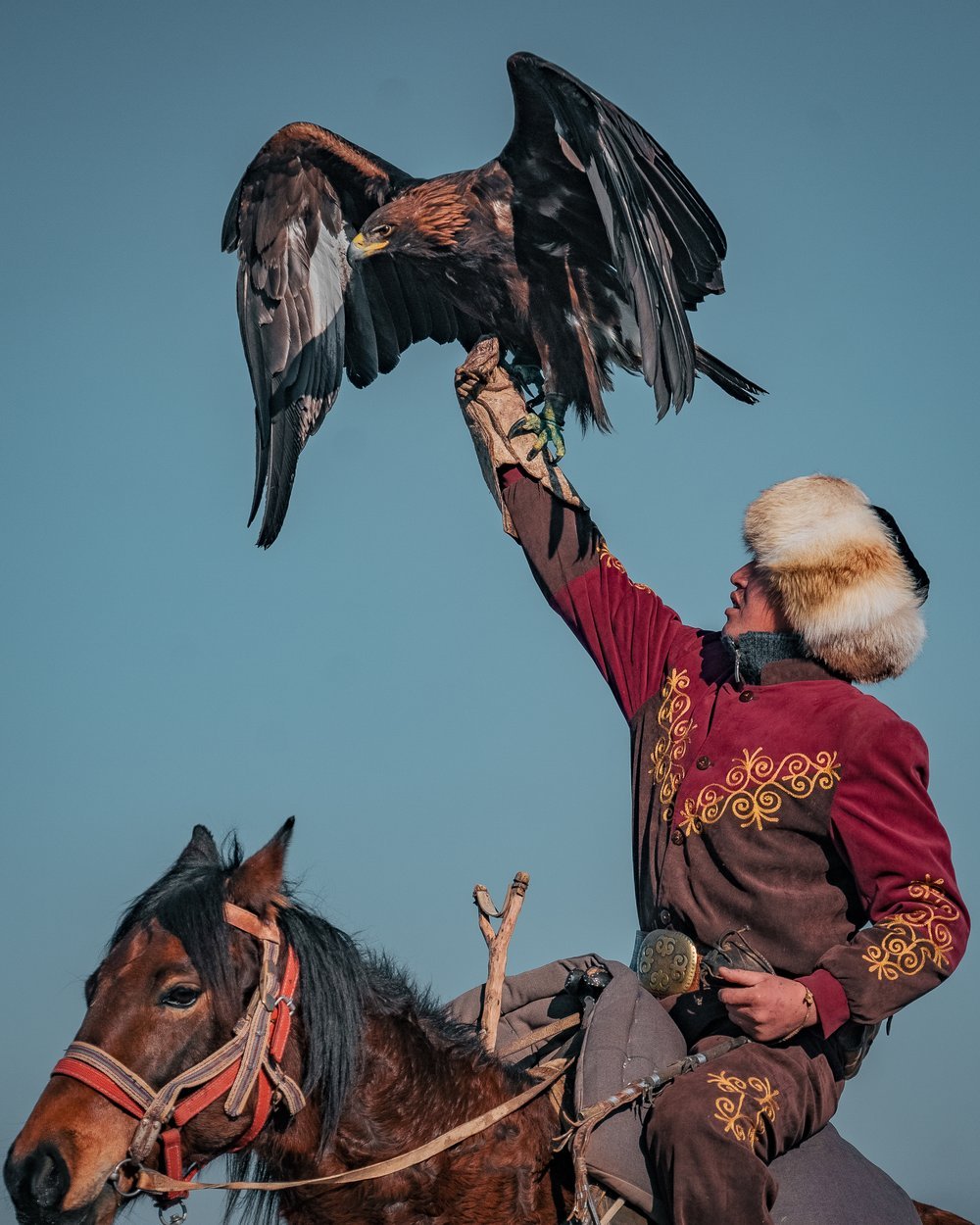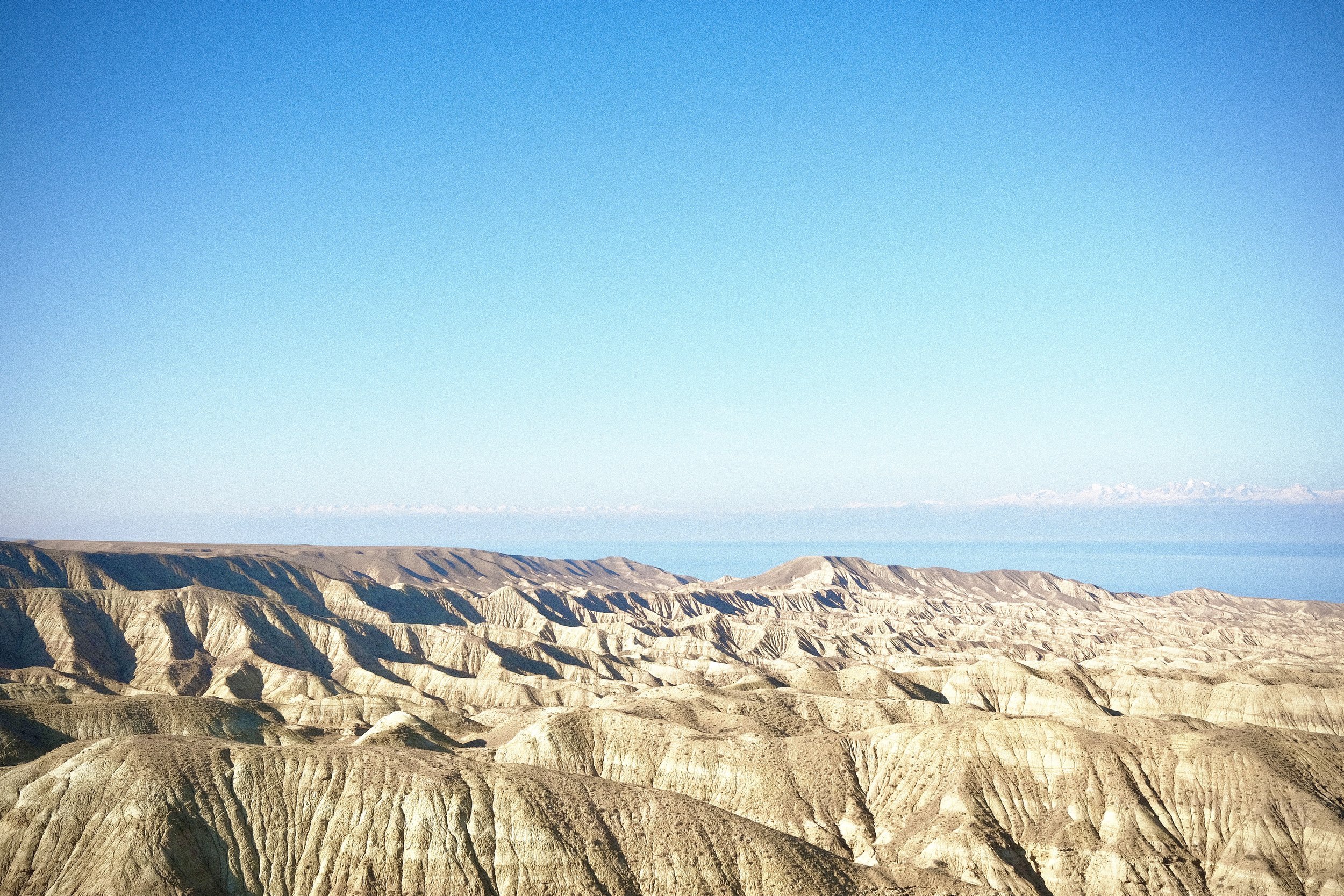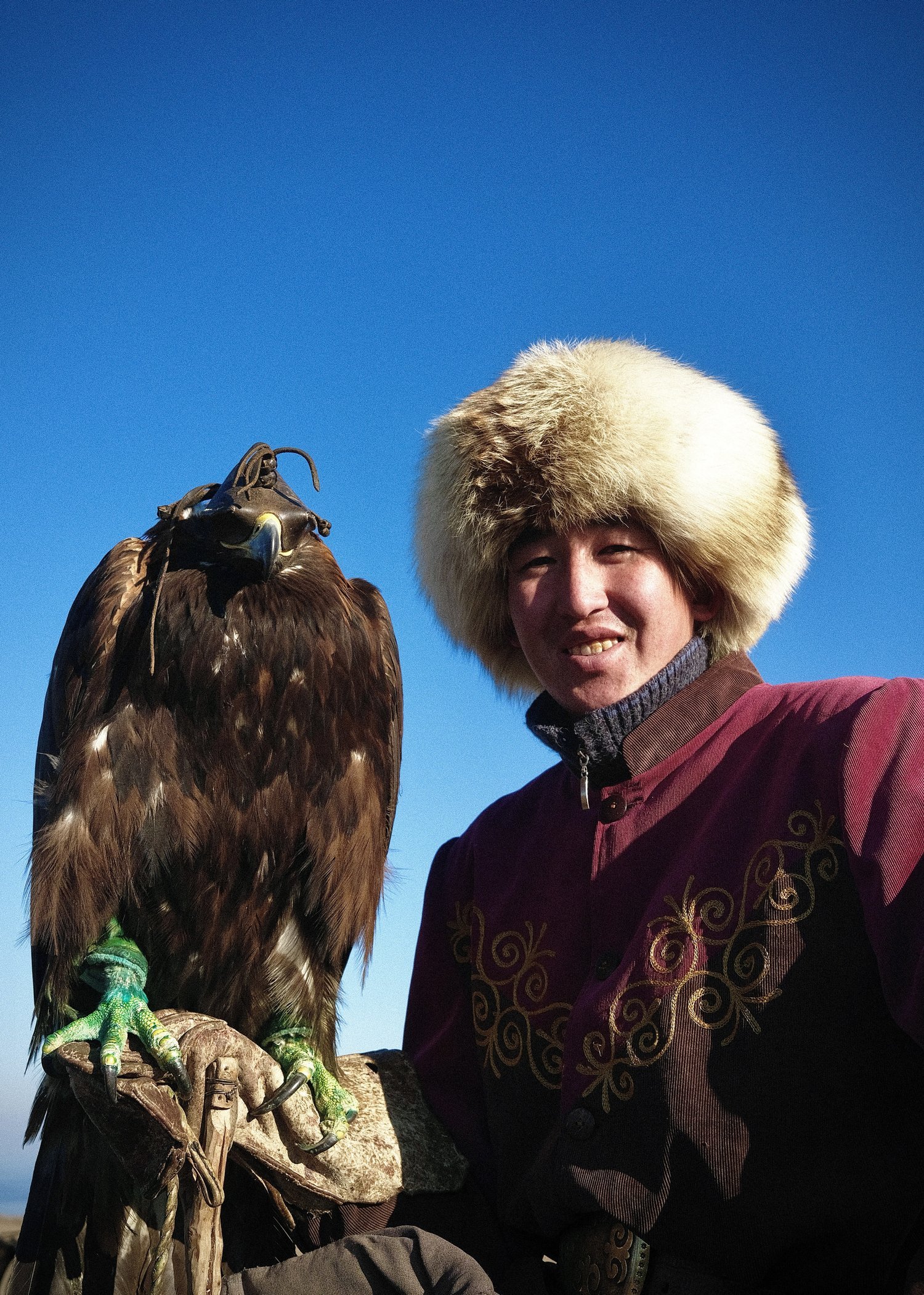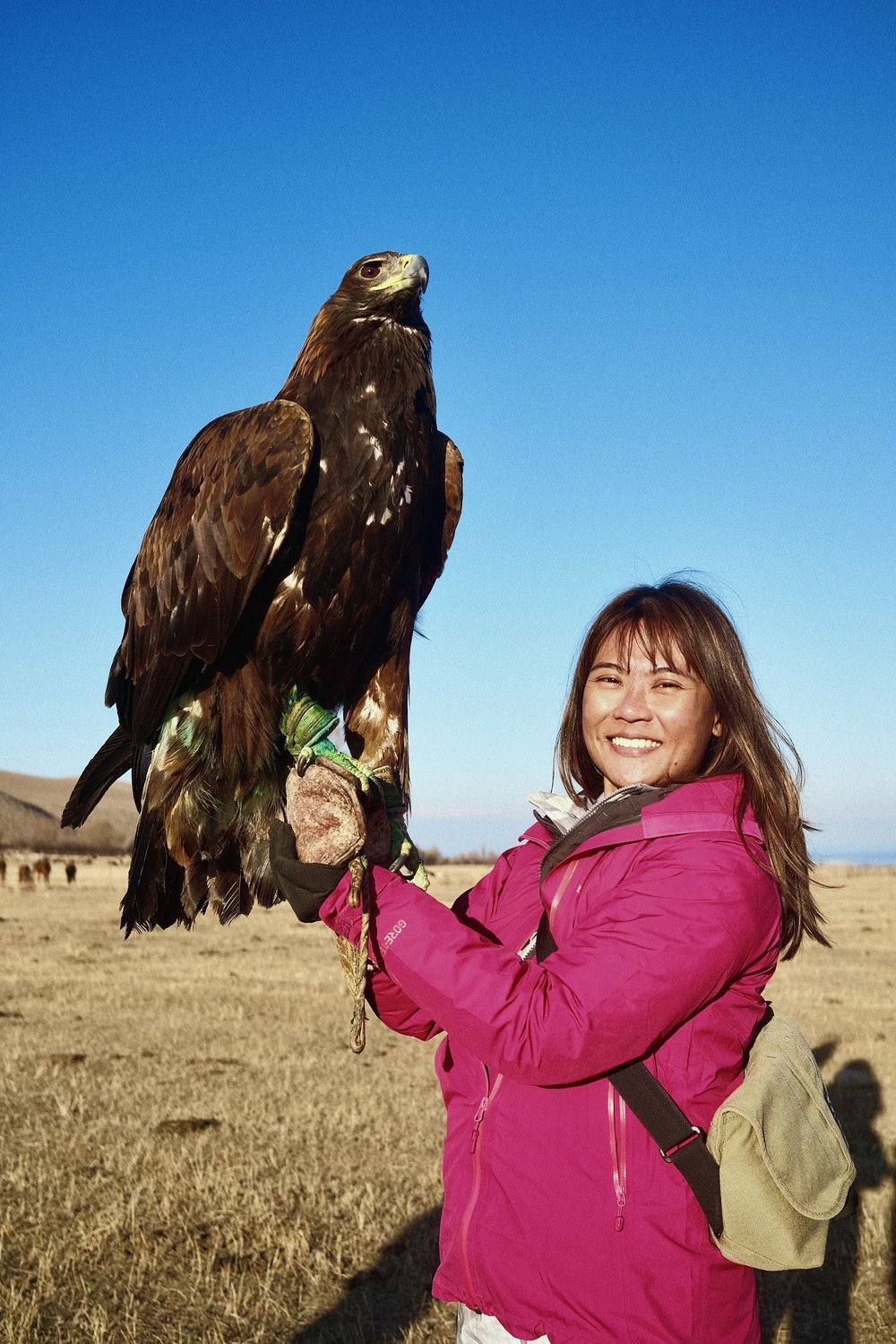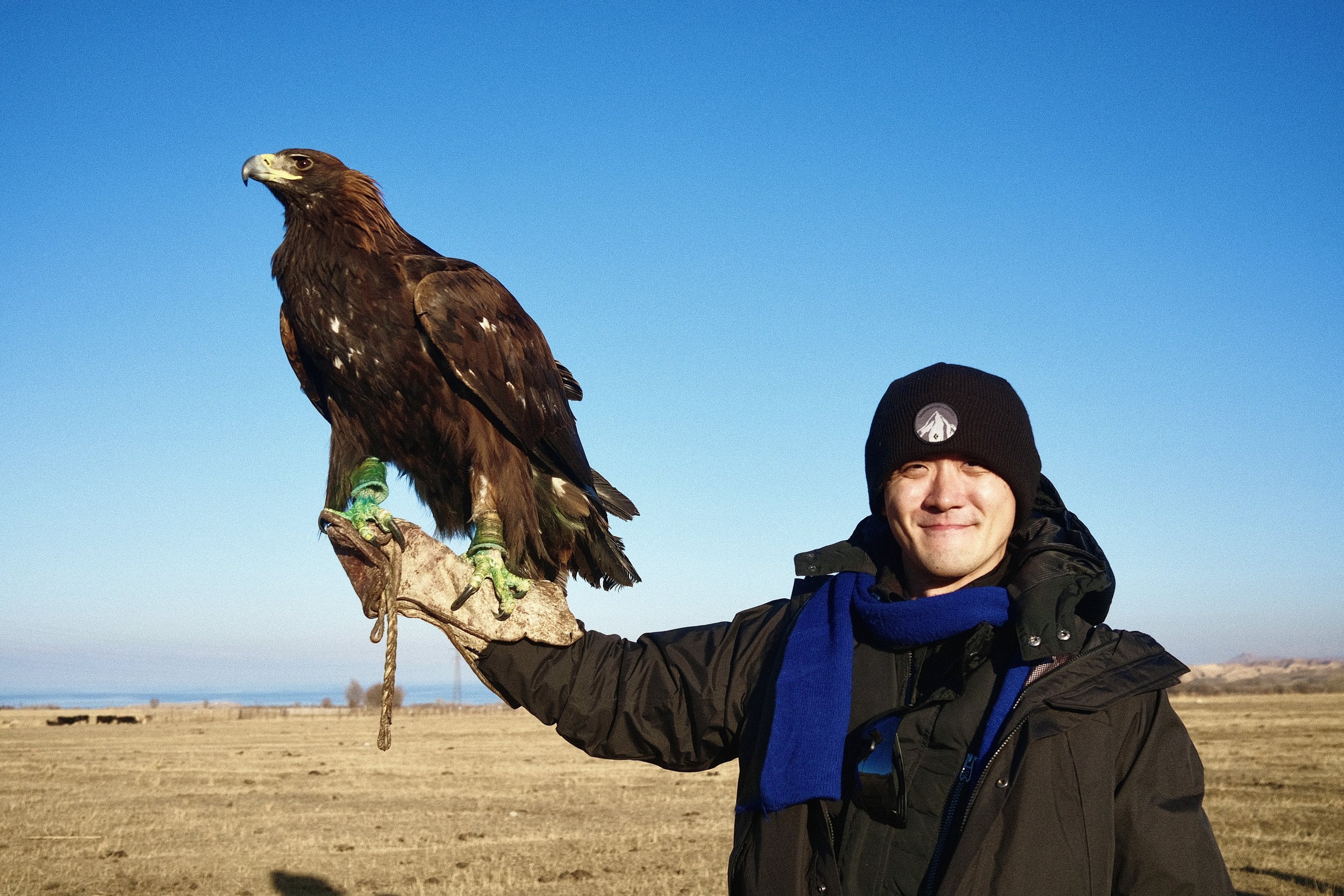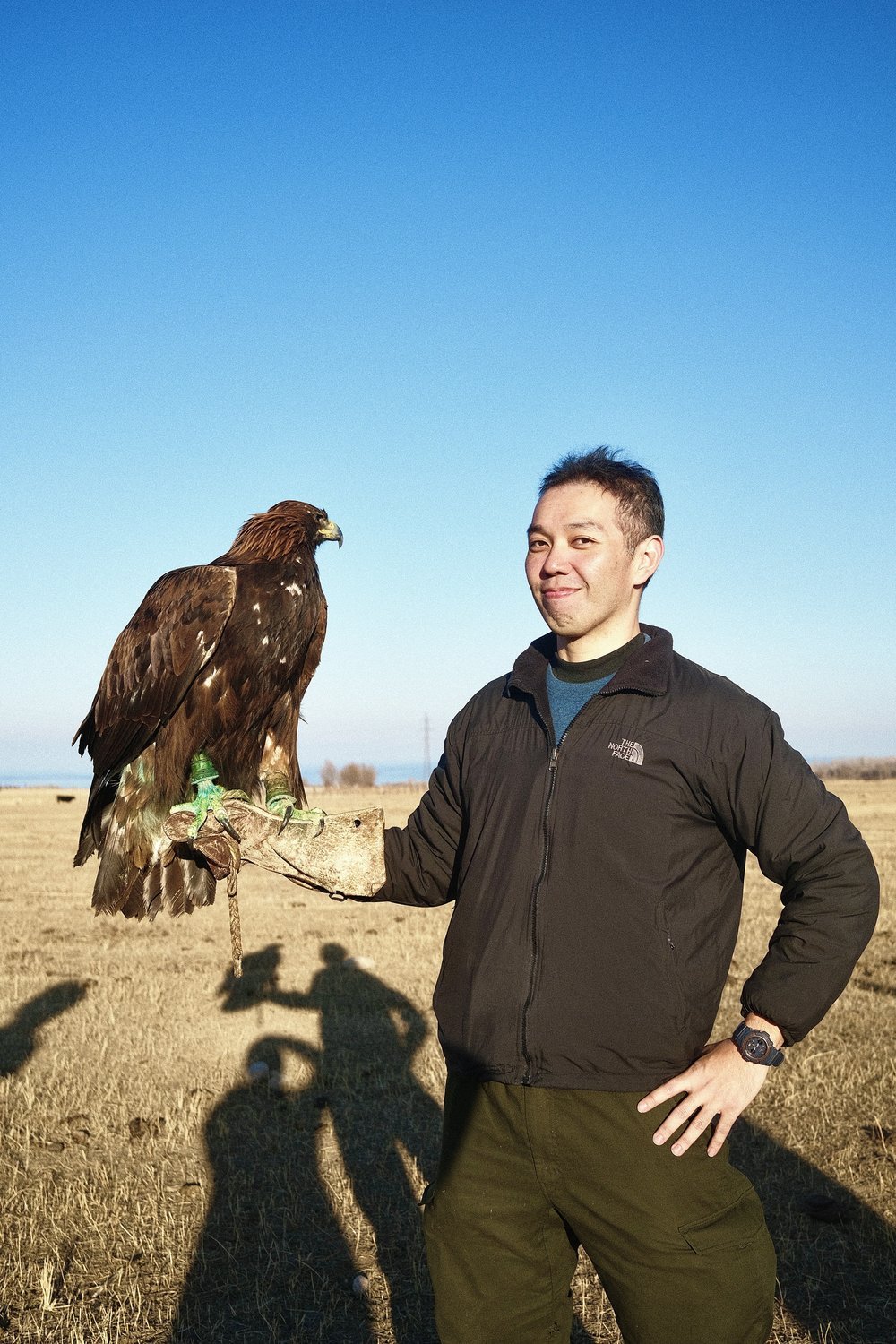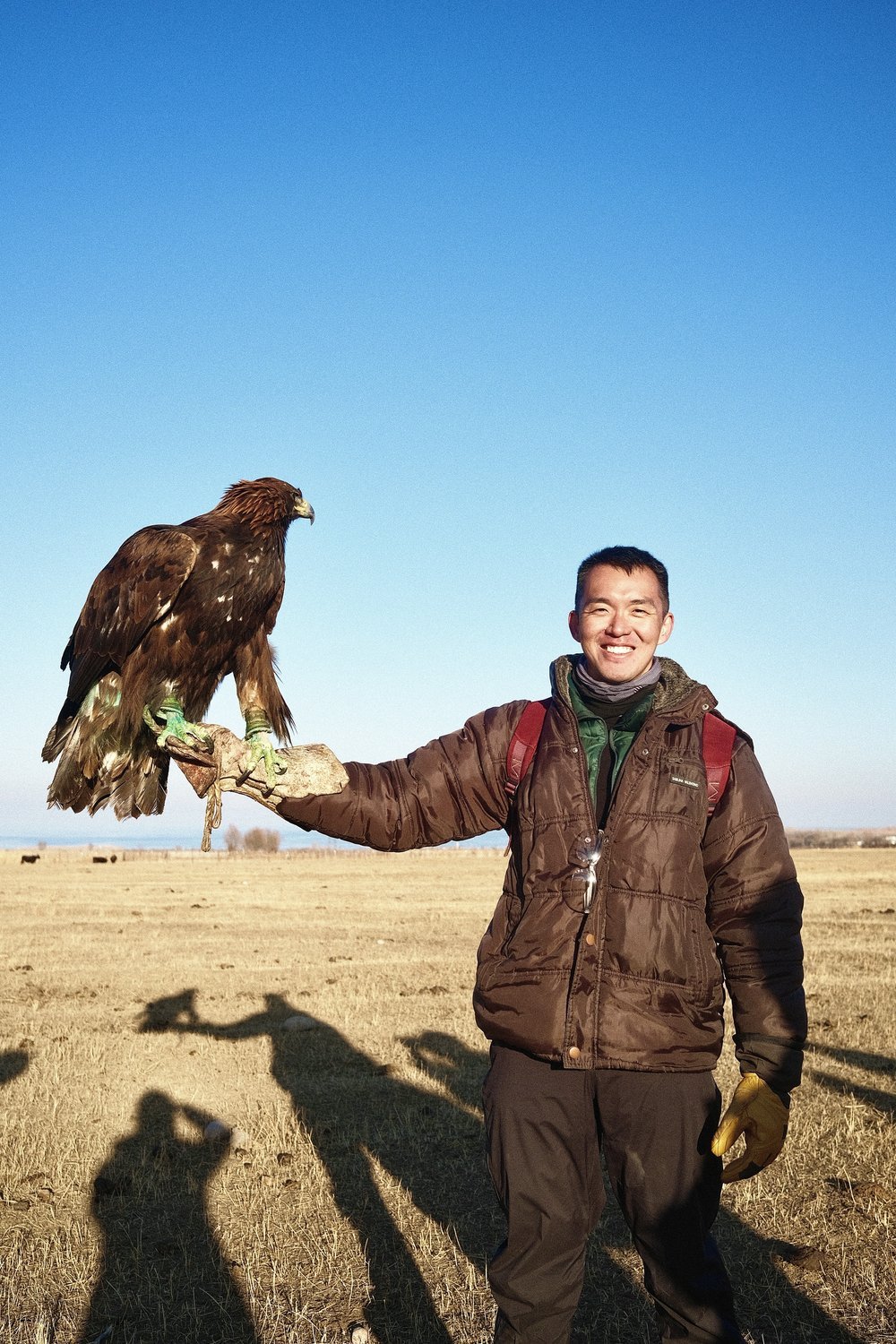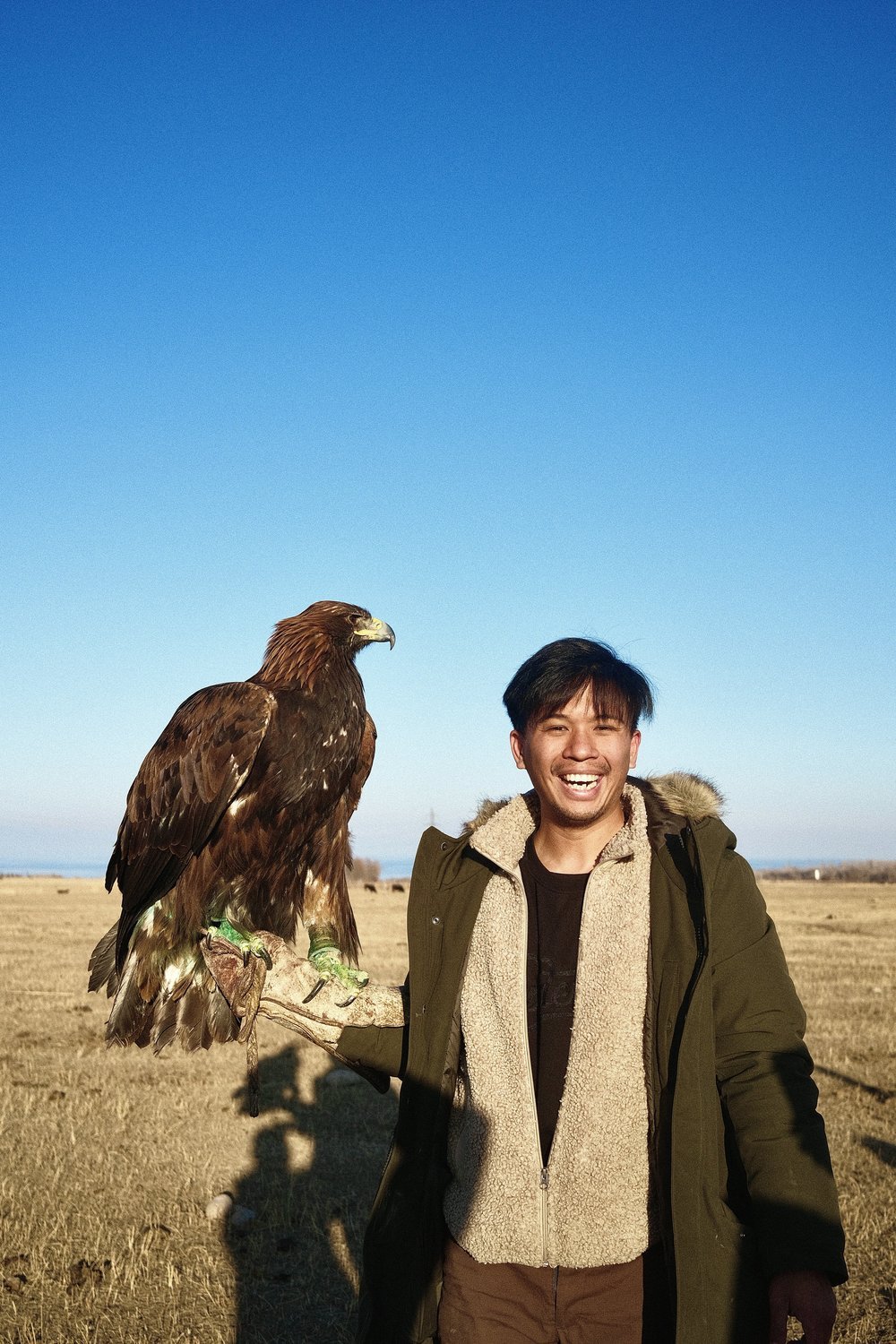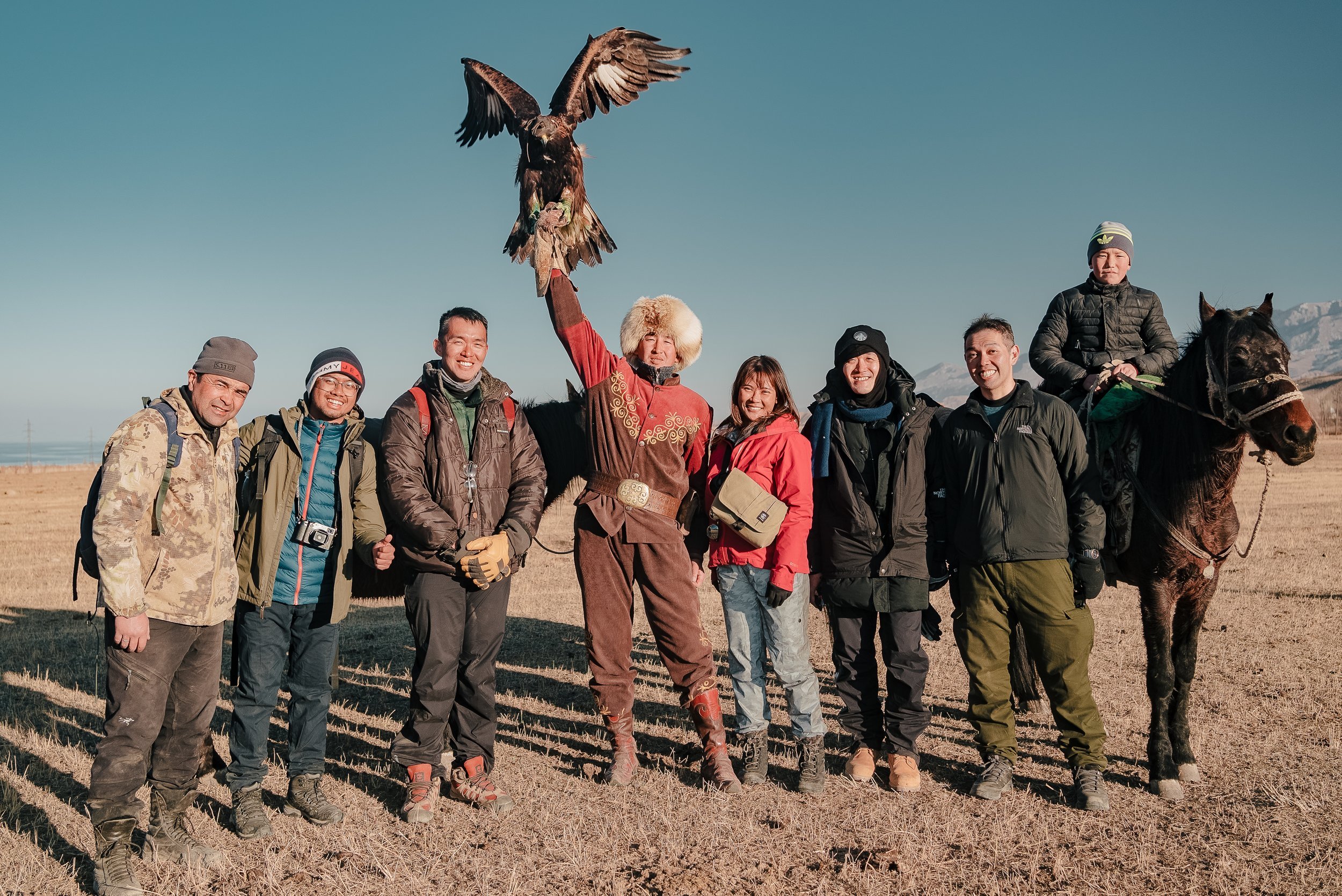Life as a Golden Eagle Hunter in Bokonbaevo, Kyrgyzstan
Our expeditions have brought travellers to the most unconventional and uncharted regions of the world. With uniquely curated itineraries, our travellers get to experience a diverse range of cultures, traditions and way of life. One of our most popular expeditions takes you to West Mongolia to experience the prestigious annual Golden Eagle Hunting Festival. During these festivities, you get to witness a Golden Eagle up-close and watch Eagle Hunters compete in a series of competitions to claim the ultimate prize - the title of The Best Eagle Hunter in the Land!
However, aside from the glitz and glamour of the competition, we wanted to know more about the daily lives of the Eagle Hunters! So, we ventured deeper into the uncharted regions of Central Asia! Opening trips to Kyrgyzstan, we journeyed into the south shores of Issyk-Kul Lake, 280 km off Bishkek and into the small town with a population of 12,500.
Rumour has it that this particular village boasts the most highly skilled Eagle Hunters! A dying nomadic tradition preserved by a handful, these hunters spend their entire life honing their skills to protect the ancient art of eagle hunting.
Follow us as we spend a day with one of Kyrgyzstan’s finest Eagle Hunters in Bokonbaevo Village; and to better understand the life of an eagle and its master.
Meet Salavat,
the 2016 World Nomad Games Champion.
The 27 year old Eagle Hunter first gained interest in hunting at the age of 12 and began training his very first eagle when he turned 15. That’s an entire Zodiac cycle of experience right there! With him is his trusty companion, Cagilgan. In Kyrg, Cagilgan stands for ‘Lightning’. Cagilgan is a female, 3-year-old Golden Eagle that weighs approximately 7 kg. Hunters usually prefer females to males when selecting their Golden Eagles, due to their larger size and sharper claws.
We got on horseback and travelled into the valleys to hunt Cagilgan’s first prey of the day. Being someone who has never come face to face with an Eagle Hunter before, there was so much we wanted to ask about their daily life. With the help of our guide and translator, Zhanarkul, we managed to understand Salavat’s usual routine.
Salavat typically spends the hunting season (between October to February) surveying different landscapes outside of Bokonbaevo to find fresh pawprints of small to midsize prey, such as foxes, jackals and rabbits. During the off season, Salavat spends his time as a welder (crafting iron), and invests his time in agriculture and cattle breeding to make ends meet. He continuously nurtures his relationship with Cagilgan, and we learnt that in Kyrgyzstan, hunters are usually expected to spend 2-3 hours a day during off seasons sharpening their eagle’s hunting instincts. Salavat was trained by his mentor named Arstan, and belongs to the seventh generation of eagle hunters in Kyrgyzstan. Eagle Hunting is a nomadic tradition that has been passed down from generation to generation and hunters wish to keep inspiring the younger ones to keep the tradition alive especially when the lifestyle of an Eagle Hunter gets increasingly more difficult to commit to in such modern times.
With his eagle perched on his gloved right arm as he rides across the valleys, fully clothed in the uniform of the Federation of Eagle Hunters and the Kyrgyz white hat, Ak Kalpak, there’s a certain aura about Salavat that draws you in and makes it hard to look away. He radiates an air of confidence and self-assurance, and his presence was enough to inspire admiration from those who pass him by.
It was hard to keep up with him as Salavat rode faster into the valleys. Maybe he sensed something that we couldn't? Could it be that Cagilgan’s sharp eyes saw shadows and movements of her prey? It was an indescribable experience, witnessing the chemistry between both bird and hunter. It must have taken years to develop such a deep connection; in fact, Salavat captured Cagligan from its nest while she was still a tiny little eaglet. Salavat even shared that some hunters get injured trying to catch one as parents of the eaglets come swooping in to protect their young one.
Eagle-hunter pairs are usually deemed ready to hunt in the wild after they’ve trained together for at least 3 years. That’s the amount of time required for the eaglet to recognise the hunter as his master. In her training years, Salavat would often sing and talk to Cagligan to help her identify his voice. To further deepen their bond, Salavat also ensures he’s the only one feeding Cagligan each day. They would begin training by having the hunter use a stuffed fox that is tied to a rope. The golden eagle will then practise swooping in to land on the fox. It is not an easy feat; Salavat had to train Cagligan multiple times a day before she was ready to begin hunting. Today, there will be no stuffed fox; Cagligan is all ready for a real catch, and eyeing for her ‘hunt’.
So what happens when Cagligan successfully catches her prey? The Golden Eagles are trained to kill their prey in a single stroke just by breaking its neck, before patiently waiting for their hunter to catch up to them. The hunter will then award his eagle with a small portion of the kill, and the rest of it is brought back home to be used for food and fur. At that moment, it hit us that there’s a chance we could be eating freshly caught prey, which made that moment even more thrilling. Fingers crossed.
And off she goes! Cagligan’s sharp eyes spotted something underneath the bushes of the valleys and Salavat raced to keep up as Cagligan swiftly flew forth at top speed. We stood in awe as we witnessed this magical moment in front of our eyes. A buzz of excitement and anxiety filled the air as we awaited their return. As time passed, there seemed to be no signs of them returning anytime soon. Our hopes of having a fresh rabbit or even a fox seemed more unlikely by the minute…
Eventually, Salavat and Cagligan came back empty-handed. And we learnt that sometimes, these situations happen. Even though Salavat and Cagligan had an unbreakable bond, a prey is capable of outsmarting or outrunning the hunter and eagle. Much to our surprise, the failed attempt did not demoralise Salavat’s morale. In fact, he fed Cagligan and showered her with tender loving care, praising her for her efforts. This moment with Salavat taught us two things: 1) that being an Eagle Hunter is an honourable and respectable title that many Kyrgs choose to forgo to live a modern way of life and 2) to never give up. It was a privilege to see such a noble hunter in his element.
As dusk approached, we headed back to the village with our horses. But before we parted ways, Salavat gave us an opportunity of a lifetime; we got to hold Cagligan on our gloved right arm! Despite not being able to experience having freshly caught prey for dinner, this was just as amazing an experience to be able to hold one of the legendary birds of Kyrgyzstan.
As we hugged and bid farewell, Salavat laughed and said ‘At least I still got 17 years with her to hunt!’ Eagle Hunters usually have about 20 years with their eagle, and this length of time gives both hunter and eagle more opportunities to strengthen their bond and sharpen their hunting skills. In these precious years, Cagligan will grow to be more than just a hunting partner but a treasured family member. Eagle Hunters have to release their beloved pet after the 20th year, and let it resume its life in the wilderness as it picks up its wild habits once again.
A true love story between man and eagle.
Having experienced the Legendary Golden Eagle Hunting Festival in West Mongolia and getting to spend a day with a noble Eagle Hunter has broadened my mind regarding the culture and nomadic traditions of eagle hunting. The festival itself presents a chance to witness the true power, speed, agility of the elusive Golden Eagles and what they’re capable of. With huge crowds and their big camera lenses, it’s a spectacle to behold. On the other hand, the intimacy in spending a day with an eagle hunter allows us to deeply understand the time and effort that goes into their training and the upkeep of their tradition.
If this article has tugged at your heart’s curiosity and wonder, join us on our next Kyrgyzstan expedition here. Being there to understand the life of eagle hunters in person is an experience highly unparalleled by many other conventional tours. This will be a once-in-a-lifetime for you, without a doubt!
Article Written By: Dzul
Beyond Expeditions’ Adventure Content Writer since June 2022 and pursuing his Communications Degree in Singapore University of Social Science. He hopes to continue his knack for travel writing, sharing stories in hopes of inspiring the travel bug in his readers. He dabbles in photography on the sides and wants to incorporate beautiful visuals in his storytelling. A true fan of the outdoors, his thirst for adventure is second to none!

